Thursday, November 18th 2010

ASRock Unveils its Socket LGA1155 Family of Motherboards
ASRock unveiled its socket LGA1155 motherboard lineup in grand style, showing off eight models, including four value-thru-enthusiast grade motherboards based on the Intel P67 chipset, and four essential-thru-mainstream motherboards based on the Intel H67 chipset. The series is topped by the P67 Extreme6, which packs no less than six SATA 6 Gb/s ports, four external and two internal USB 3.0 ports, three PCI-Express x16 slots, 18-phase CPU VRM making use of high-grade capacitors, and a huge set of connectivity features. Next up is the P67 Extreme4, which is a notch lower than the Extreme6, but it still gives you four SATA 6 Gb/s and four USB 3.0 ports (two external, two internal via header), the same expansion slot layout as the Extreme6, and a slightly slimmer connectivity feature set.
The two Extreme boards are trailed by mid-range ones, starting with the P67 Pro3. The P67 Pro3 has a simple layout and offers not much more than the chipset's feature-set. There are two SATA 6 Gb/s and two USB 3.0 (rear) ports, expansion slots that include just one PCI-Express 2.0 x16, three PCI-E x1, and three PCI. The CPU is powered by an impressive (for this category) 10-phase VRM. Further down the line is the P67 Pro, which is further slimmed down. It does away with USB 3.0 but retains SATA 6 Gb/s. A simpler 4+1 phase CPU VRM is used. Most other features are the same as the Pro3.The Intel H67 lineup, where any motherboard manufacturer is expected to sell bigger volumes, begins with the feature-rich H67M GE-HT. This board is made for premium HTPC builds, it offers all the connectivity and media-acceleration features needed. The CPU is driven by a 6-phase VRM, it is wired to four DDR3 DIMM slots for dual-channel memory. The Intel Flexible Display Interface (FDI) is enabled full-on here, with four kinds of display connectors present on board: DVI, D-Sub, HDMI 1.4a, and DisplayPort. Connectivity features include four USB 3.0 (2x rear, 2x internal), 8-channel HD audio with optical SPDIF output, eSATA, gigabit Ethernet; expansion includes two PCI-E x1, one PCI-E 2.0 x16, and a PCI.The H67M GE is a stripped down version of the H67M GE-HT. It uses the same PCB, but does away with VRM heatsinks, the internal USB 3.0 ports, and the DisplayPort connector. Next up is the H67M, which is at the bottom of the pile. This retains most of the features of the H67M GE, but uses a narrower PCB, and provides just two DDR3 DIMM slots for dual-channel memory. USB 3.0 and SATA 6 Gb/s are still there. Lastly there's the H67 DE3. This is an ATX board, that provides a feature set similar to the H67M GE, but with more expansion slots: one PCI-Express 2.0 x16, three PCI-E x1, and two PCI. Expect ASRock's boards to be out along with Intel's 2011 Core processor family.
The two Extreme boards are trailed by mid-range ones, starting with the P67 Pro3. The P67 Pro3 has a simple layout and offers not much more than the chipset's feature-set. There are two SATA 6 Gb/s and two USB 3.0 (rear) ports, expansion slots that include just one PCI-Express 2.0 x16, three PCI-E x1, and three PCI. The CPU is powered by an impressive (for this category) 10-phase VRM. Further down the line is the P67 Pro, which is further slimmed down. It does away with USB 3.0 but retains SATA 6 Gb/s. A simpler 4+1 phase CPU VRM is used. Most other features are the same as the Pro3.The Intel H67 lineup, where any motherboard manufacturer is expected to sell bigger volumes, begins with the feature-rich H67M GE-HT. This board is made for premium HTPC builds, it offers all the connectivity and media-acceleration features needed. The CPU is driven by a 6-phase VRM, it is wired to four DDR3 DIMM slots for dual-channel memory. The Intel Flexible Display Interface (FDI) is enabled full-on here, with four kinds of display connectors present on board: DVI, D-Sub, HDMI 1.4a, and DisplayPort. Connectivity features include four USB 3.0 (2x rear, 2x internal), 8-channel HD audio with optical SPDIF output, eSATA, gigabit Ethernet; expansion includes two PCI-E x1, one PCI-E 2.0 x16, and a PCI.The H67M GE is a stripped down version of the H67M GE-HT. It uses the same PCB, but does away with VRM heatsinks, the internal USB 3.0 ports, and the DisplayPort connector. Next up is the H67M, which is at the bottom of the pile. This retains most of the features of the H67M GE, but uses a narrower PCB, and provides just two DDR3 DIMM slots for dual-channel memory. USB 3.0 and SATA 6 Gb/s are still there. Lastly there's the H67 DE3. This is an ATX board, that provides a feature set similar to the H67M GE, but with more expansion slots: one PCI-Express 2.0 x16, three PCI-E x1, and two PCI. Expect ASRock's boards to be out along with Intel's 2011 Core processor family.
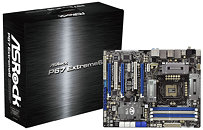
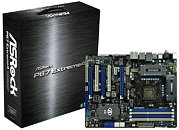
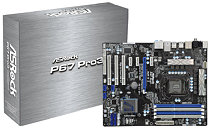
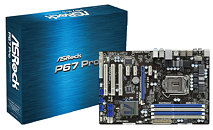
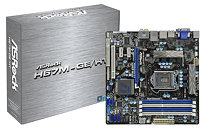
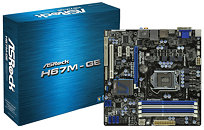
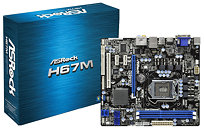
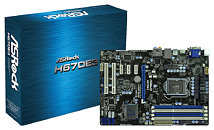
23 Comments on ASRock Unveils its Socket LGA1155 Family of Motherboards
P67Pro3 sounds like a WIN to me. Going to my wish list. :p
I have to agree on the metal plates on heat sinks, if the board i upgrade has them on i will have to remove them as for one i prefer the looks of the naked fins plus it means i can sit a fan on top of them to help cool them.
for 1156 and 1366 and now already new socket, they making nice money from the
motherboard well intel sockets sucks i am thinking to change to amd cpu
it becomes new standard when you make attractive display
In other words, ASRock are very affordable, awesome boards for the price.
its like new processor could be new socket, so if you have the old one you better trash it coz it aint match anymore :(